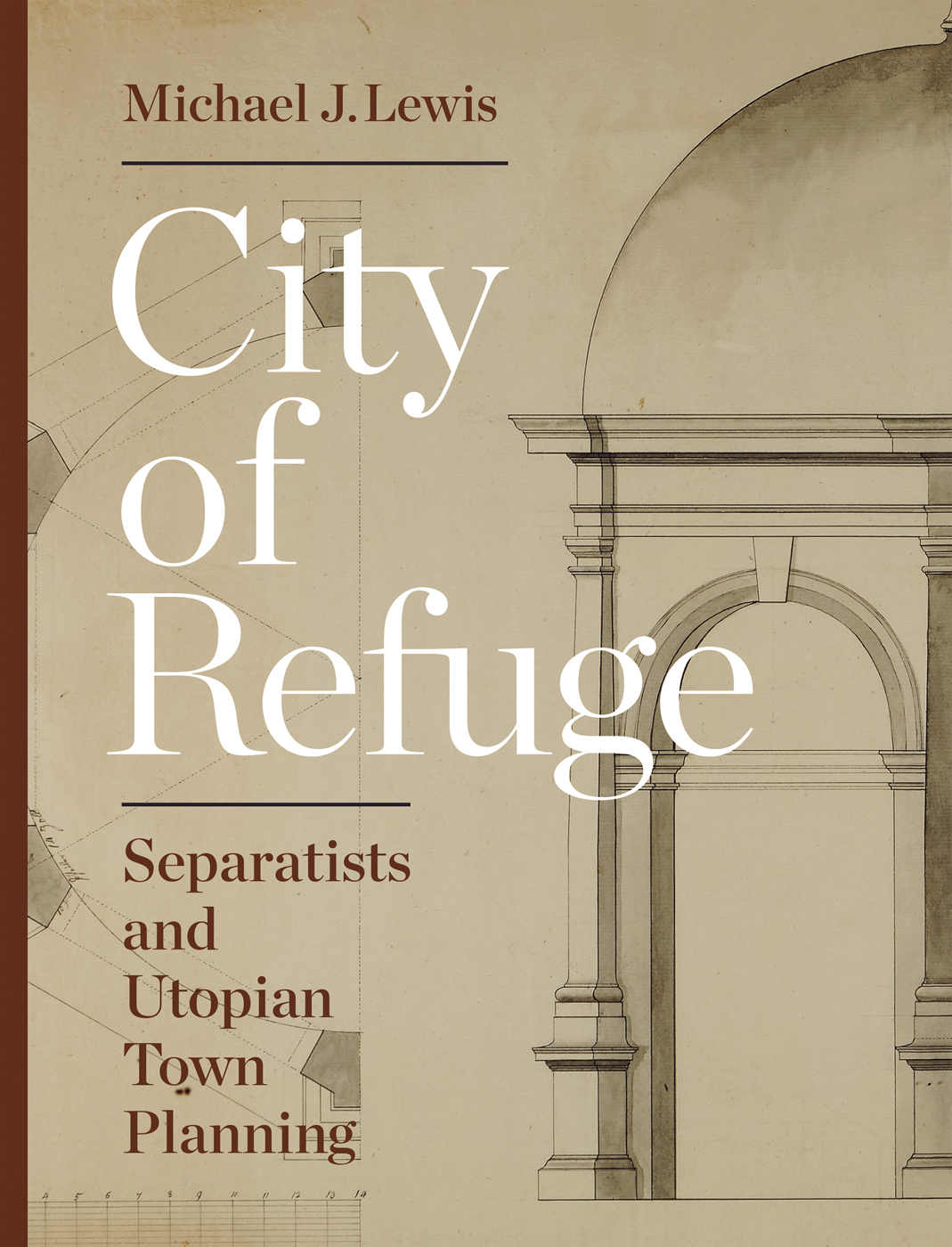Michael J. Lewis
Princeton University Press, 2016

Early in his book City of Refuge: Separatists and Utopian Town Planning, Michael J. Lewis identifies two threads in utopian thought. The mainstream tradition, he explains, seeks to achieve perfection in the known world, “liberat[ing] it from strife, want, and woe.” The second, more pessimistic, takes as a given “that squalor and discord are the natural state of baffled human existence.” Accepting that reform is an impossibility, those of the latter camp withdraw instead “to distant sanctuaries” (10) where they will be left alone to pursue their ideals.
One might be forgiven for thinking of the present in reading these words, in these months in which—at least for readers from the United States—the refrain, “I’m moving to Canada,” has been oft heard. Yet Lewis explores this as a tradition with very deep roots extending to the first years of the early modern period and beyond, and one often pursued with great urgency, amidst successive waves of religious persecution, harassment, and violence. For those establishing isolated sanctuaries in the Old World or, increasingly, in the lands on the other side of the Atlantic Ocean, relocation—whether elective or forced—was a tool for survival. And the construction of new settlements was a means of endurance. As Lewis explains over eight engagingly written and beautifully illustrated chapters, architecture and urban planning were fundamental to the construction of what Lewis calls “cities of refuge” and, crucially, to the ideas those cities and towns represented for their inhabitants. If born in isolation, however, their influence was anything but isolated. Cities of refuge, an idea invented thousands of years ago, articulated in the Bible, recreated amidst the Renaissance, and then perfected in the early American republic, would shape the modern world that followed. If established by separatist religious sects in many cases, their reverberations would nevertheless extend far beyond religious settlements.
As this suggests, the major intervention that Lewis seeks is to lower false boundaries between the study of communal societies that are religious and those that are secular. As Lewis explains, this distinction has pervaded the study of these intentional communities, often to the detriment of both types. Or, where scholars have considered them together, they have done so by lumping all under the same banner without tracing the complex influences between them. Yet such influences prevail in this history, Lewis explains, a fact that he demonstrates through a careful study that is often situated in a close reading of form in the shape or arrangement of these cities. With Lewis as the guide, analysis of form shows commonalities between plans as seemingly distinct as Albrecht Dürer’s ideal city, drafted in 1527, and that of New Haven, Connecticut, founded in 1633. Or Robert Owen’s “Village of Unity and Mutual Cooperation” (1817), a secular place intended to impose moral order with education, and Harmony, Pennsylvania (1804), the first American settlement of devout, celibate, communistic Pietists exiled from Germany.
Amidst their geographic and temporal diversity, the vast majority of these cities shared a devotion to the right angle and the rational, orderly forms it generated. Whether they were motivated by the sacred or the profane, City of Refuge explains, a wide array of ideas found a home in similarly gridded plans. This commonality is not only interesting as architectural history, though it is revealing in that realm, but it also helps Lewis to make a larger argument: that religious cities of refuge were not irrelevant to the formation of the modern world, but essential to it. “These frail and marginal experiments, although they struggled at the fringe of the Western world, were at the very hub of modernity” (211), Lewis writes. They influenced the form and ideas of their nonreligious counterparts as well as the social and economic understanding of figures like economist Friedrich List and Friedrich Engels. If we accept that much of the last two centuries was defined either with or against socialism, as Lewis contends, then their role as fundamental “historical sources” (217) for socialism makes their import clear. Though Engels would later write them out of the story he told, dismissing them as odd for their beliefs, Lewis argues that religious “cities of refuge” were successful and enduring—far beyond their secular peers—precisely because of the cohesion enabled by those beliefs.
This does not take away from what is an extremely readable, well-argued book. By linking the secular and religious in centuries that span the Renaissance and the Industrial Revolution, Lewis has brought a range of lesser-known examples into the history of the built environment at the urban scale. He has also provided the connective tissue that will enable future works to take up the question of their direct and indirect effects in the decades that followed. Though cities of refuge were formed to allow escape from the world as it was, City of Refuge demonstrates that they were central to that world. If exceptions, they were also exceptional, and therefore profoundly influential well beyond their devout believers.
How to Cite this Article: Goldstein, Brian. Review of City of Refuge: Separatists and Utopian Town Planning, by Michael J. Lewis. JAE Online. June 28, 2017. https://jaeonline.org/issue-article/city-refuge-separatists-and-utopian-town-planning/.






